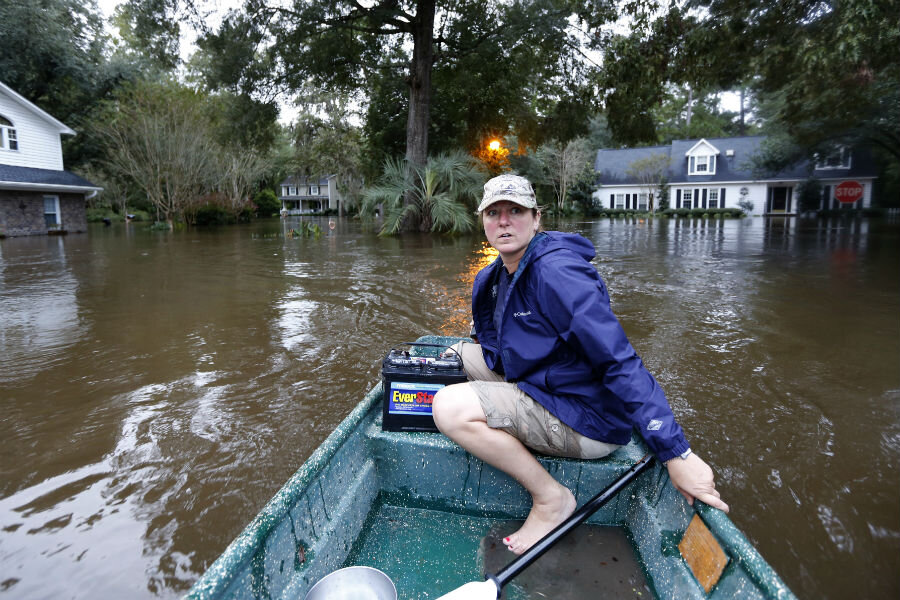The sun will come out for South Carolina but flood threats cloud recovery
Loading...
Hurricane Joaquin spared the East Coast, but created what the National Oceanic and Atmospheric Administration called a "fire hose" of tropical moisture that pointed its funnel directly at the state of South Carolina.
On Tuesday, sun is forecast, but the historic rainstorm leaves in its wake weeks of cleanup and a lingering threat of flooding and evacuations in South Carolina.
"This is not over. Just because the rain stops does not mean that we are out of the woods," South Carolina Gov. Nikki Haley said at a news conference Monday, and warned residents to remain on alert.
More than 2 feet of rain has fallen in the past three days in parts of South Carolina, the wettest on record in the capital city of Columbia, and moderate to heavy rain persisted on Monday in the state's saturated northeastern corner and in southeastern North Carolina, the National Weather Service said.
Though rain is forecast to taper off on Tuesday, according to the NOAA, officials are warning residents of the likelihood of new evacuations. One was ordered Monday afternoon in one of two towns east of downtown Columbia when two dams were breached.
The governor warned communities downstream that a mass of water was working its way through waterways toward the low-lying coast — bringing the potential for more flooding and more displaced residents.
President Obama declared a disaster in South Carolina, making federal funds available to local governments and non-profits in 11 counties.
South Carolina's geography and limited investments in infrastructure have left islands where once there were towns, with roads washed out and waterways topping over bridges. According to the American Society of Civil Engineers, 1,048 of the 9,275 bridges in the state were structurally deficient prior to the storm. As of Monday, the governor said 550 roads and bridges were closed across the state. All will have to be checked for structural integrity, which could take weeks or longer.
One particularly hard-hit town is Manning, the county seat of Clarendon County, about 60 miles southeast of Columbia.
"I fear the worst is to come. We have a power substation under water. No telling when that thing gets fixed," Clarendon County Sheriff Randy Garrett said.
At least 10 deaths resulted from the storm in South Carolina and two in North Carolina were blamed on the rain, including five people who drowned in their cars in Columbia. Seven days of rainfall sent about 1,000 to emergency shelters and left about 40,000 without drinkable water. About 26,000 were without power, officials said.
The governor has said the deluge is the kind of storm seen only once in 1,000 years.
This report contains material from the Associated Press and Reuters.






